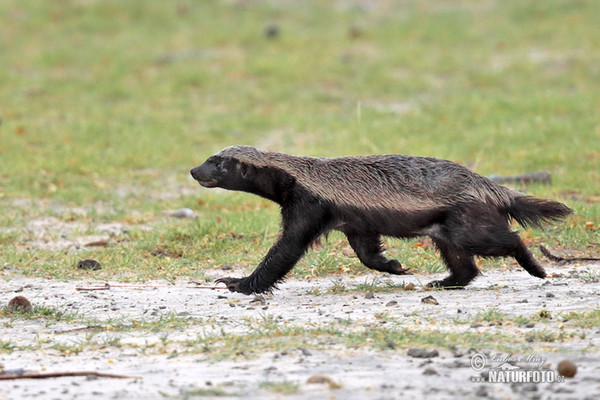The honey badger (Mellivora capensis), also known as the ratel, is a mammal widely distributed in Africa, Southwest Asia, and the Indian subcontinent. Because of its wide range and occurrence in a variety of habitats, it is listed as Least Concern on the IUCN Red List.
It is the only living species in the genus Mellivora and in the mustelid subfamily Mellivorinae. Despite its name, the honey badger does not closely resemble other badger species; instead, it bears more anatomical similarities to weasels. It is primarily a carnivorous species and has few natural predators because of its thick skin, strength and ferocious defensive abilities.
Carnivorous diet (generally, opportunistic foragers and eat a wide variation of foods)
Stocky body, More anatomical similar to weasels, rather than other badger species. Large skull, small eyes, muscular neck and shoulders. Lower half of the body is a dark black, with an upper mantle that is either grey or bright white. Forefeet are strong and wide, hind feet are small.
Primarily solitary, with a non-territorial polygynous or promiscuous mating system. Not endemic to Africa (also found in Asia). Can be found in a wide range of habitats, from rain forests and woodlands to arid deserts.
Range from sea level to as much as 2,600 m a.s.l. (in Africa). Body parts are commonly used in traditional medicine because of their reputation for fearlessness and tenacity.
In some areas they appear in the bushmeat trade. It has 9 – 16 kg (males) and 5 – 10 kg (females).

